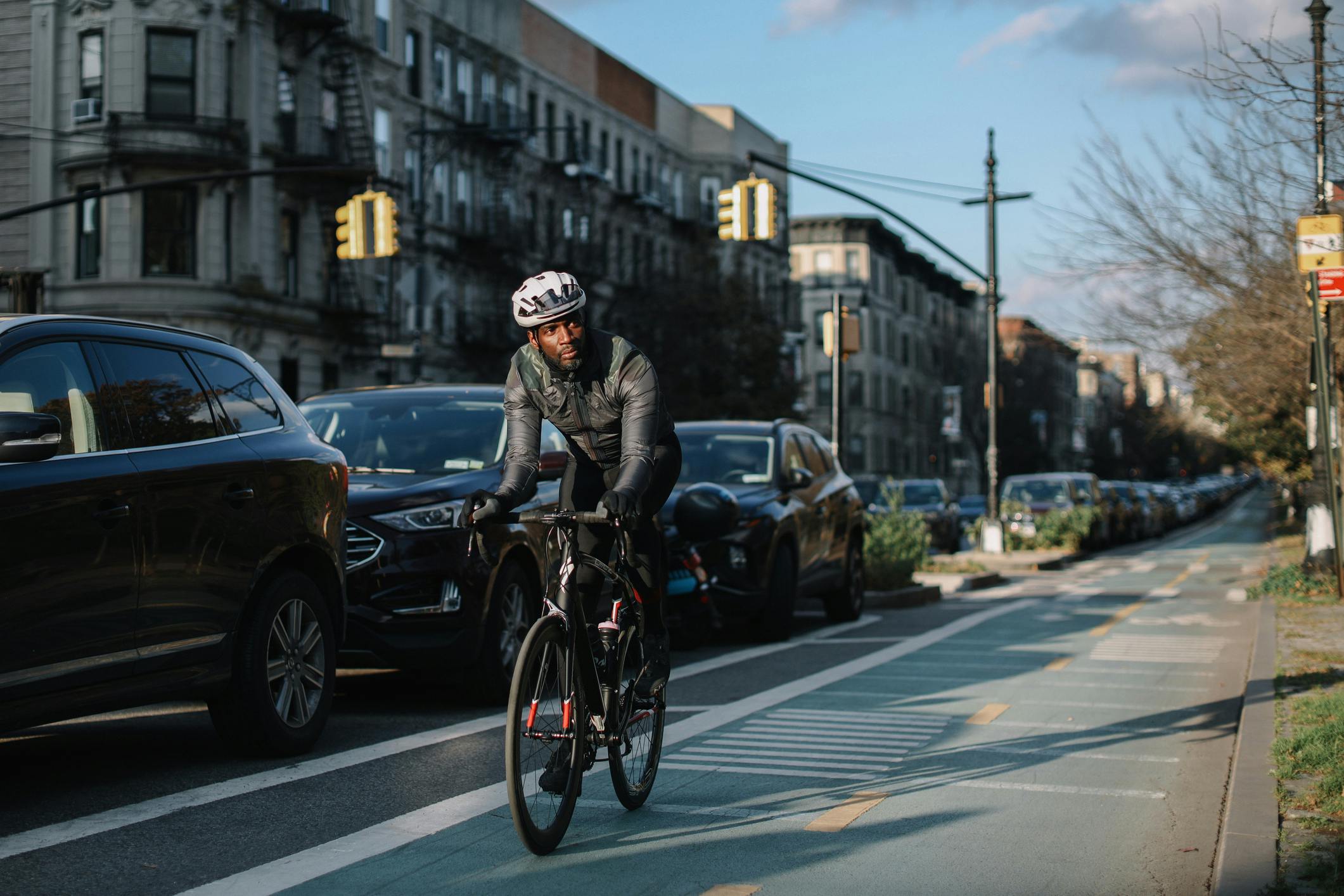New Resources Offer Guidance on Building Great Places to Ride
By: Martina Haggerty, vice president of infrastructure

As communities work to improve the quality and design of bike infrastructure, two new resources provide state-of-the-art strategies for creating safer, more connected, and user-friendly bikeways that meet the needs of riders in diverse environments.
With bicycling participation increasing across the U.S., it is critical that we support and continue this growth by creating more great places to ride. Safe, connected, and accessible places to ride are essential to getting more people biking more often and improving road safety nationwide. Both the Guide for the Development of Bicycle Facilities from the American Association of State Highway and Transportation Officials (AASHTO) and the Urban Bikeway Design Guide from the National Association of City Transportation Officials (NACTO) offer communities clear paths to making better bike infrastructure a reality.
In December, AASHTO released the fifth edition of the Guide for the Development of Bicycle Facilities, marking a significant step forward for the organization’s guidance for U.S. communities of all shapes and sizes to design safe, effective, and inclusive bike infrastructure. AASHTO represents transportation departments across the U.S. and in addition to its other activities supporting transportation work, offers guidance for engineers and designers on geometric design for highways and streets.
The latest edition of the long-awaited AASHTO guide reflects several advances in design thinking, safety research, and technological innovation since its last publication in 2012. The fifth edition includes nine new chapters and significant revisions to seven others, covering topics including:
- Choosing the right bikeway type for different contexts
- Designing shared-use paths, protected bike lanes, side paths, and bike boulevards/neighborhood greenways
- Improving intersections, traffic signals, and roundabouts for people riding bikes
- Enhancing rural bike infrastructure
NACTO introduced the third edition of its Urban Bikeway Design Guide in January. NACTO is a collaborative network of 100 cities and transit agencies across North America. By fostering the exchange of innovative transportation ideas and practices, NACTO empowers communities to tackle shared challenges and develop solutions that address transportation issues.
The updated NACTO guide offers communities a comprehensive toolkit for designing safer, more accessible, connected bike networks. Endorsed by the U.S. Department of Transportation and used widely across North America, the guide goes beyond focusing on individual bike projects to emphasize the importance of cohesive networks that cater to diverse users.
The new guide offers direction on:
- Designing protected bike lanes
- Integrating bikeways into roundabouts
- Implementing signal phasing strategies that improve safety for people walking and biking
- Reducing motor vehicle speeds
- Improving accessibility for pedestrians walking along and crossing bikeways
- Operating and maintaining bike facilities
- Maintaining bike facilities during construction disruptions
- Planning for newer mobility options like e-bikes, cargo bikes, and scooters
“Access to transportation means access to opportunity,” said NACTO Executive Director Ryan Russo in a press release. “The third edition of the Urban Bikeway Design Guide takes all that we’ve learned from hundreds of projects across North America. It provides more than just a kit of parts for designing a bike lane: it provides the how-to blueprint for creating a whole bike network for people of all ages, abilities, and identities.”
Both guides emphasize the importance of a flexible, context-sensitive approach and equip communities with the practical information needed to address unique challenges with design solutions that prioritize safety and usability. Advocates for better biking can leverage these updated guides to continue the momentum for better biking, break down barriers to riding for vulnerable or marginalized groups, and create a safer future for people of all ages and abilities.
With these guides now available, it’s time to put them into action and make our communities great places to ride a bike.
You can help by encouraging your state, city, or town to formally adopt the fifth edition of the AASHTO Bicycle Guide and the third edition of NACTO’s Urban Bikeway Design Guide. You can also ask your elected officials and decision-makers to bring in experts to conduct training sessions on both guides to ensure state and local engineers and designers are well equipped to build high quality bike projects in your community.
_____________________________________________________________________
To further support the adoption and implementation of great places to ride, PeopleForBikes offers two powerful tools for communities looking to improve biking locally: City Ratings and the Great Bike Infrastructure Project. Our City Ratings program evaluates and scores communities on how good they are for biking based on the quality of their low-stress bike networks, identifying strengths and areas for improvement. The Great Bike Infrastructure Project complements City Ratings by tracking thousands of planned bike projects across the U.S. and offering guidance to accelerate the development of safe, fun, and connected bike networks.
Related Topics:
